Figure shows some equipotential lines distributed in space. A charged object is moved from point A to point 5.

The work done in Fig. (i) is the greatest
The work done in Fig. (ii) is least.
The work doen is the same in Fig. (i), Fig. (ii) and Fig. (iii)
The work done in Fig. (iii) is greater than Fig. (ii) but equal to that in Fig. (i)
The correct Answer is:C
In Fig, we observe that in all the three parts, VA=20V and VB=40V. Work done in carrying a charge q from A to B is W=q(VB−VA) = same in all the three figures. Choice (c ) is correct.
Topper's Solved these Questions
- ELECTROSTATICSBook:PRADEEPChapter:ELECTROSTATICSExercise:FILL IN THE BLANKS
Explore 8 Videos
- ELECTROSTATICSBook:PRADEEPChapter:ELECTROSTATICSExercise:PROBLEMS FOR PRACTICE
Explore 8 Videos
- ELECTROSTATICSBook:PRADEEPChapter:ELECTROSTATICSExercise:VALUE BASED QUESTIONS
Explore 7 Videos
- ELECTRONIC DEVICESBook:PRADEEPChapter:ELECTRONIC DEVICESExercise:Fill in the Blanks
Explore 1 Video
- MAGNETIC EFFECT OF CURRENT AND MAGNETISMBook:PRADEEPChapter:MAGNETIC EFFECT OF CURRENT AND MAGNETISMExercise:Competition Focus (Multiple Choice Questions)
Explore 2 Videos
Similar Questions
Figure (a) and (b) show the field lines of a positive and negative point charge respectively.
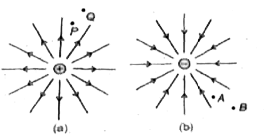
(a) Give the signs of the potential difference . Vp−VQ,VB−VA
(b) Give the sign of the potential energy difference if a small negative charge is moved from points Q to P from point A to B.
(c) Give the sign of the work done by the field in moving a small positive charge from Q to P.
( d) Give the sign of the work done by the external agency in moving a samall negative charge from B to A .
(e ) Does the kinetic energy of a small negative charge increase or decrease in going from B to A ?
View SolutionDraw the equipotential surfaces due to an isolated point charge.
View Solution
Knowledge Check
Same equipotential lines distributed in space are shown below. A charged object moves from A to B:
 AWork done is same in fig (I), (II) and (III)BWork done is greatest in fig (I)CWork done is least in fig (II)DWork done in fig (III) is greater then fig (II) but equal to that in fig (I)
AWork done is same in fig (I), (II) and (III)BWork done is greatest in fig (I)CWork done is least in fig (II)DWork done in fig (III) is greater then fig (II) but equal to that in fig (I)Same equipotential lines distributed in space are shown below. A charged object moves from A to B
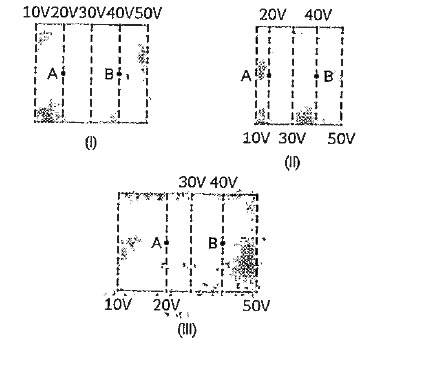 AWork done is same in fig (I), (II) nad (III)BWork done is greatest in fig (I)CWork done is least in fig (II)DWork done in fig (III) is greater then fig (II) but equal to that in fig (I)
AWork done is same in fig (I), (II) nad (III)BWork done is greatest in fig (I)CWork done is least in fig (II)DWork done in fig (III) is greater then fig (II) but equal to that in fig (I)The diagram below show region of equipotentials.

A positive charge is moved from A to B in each diagram .AIn all the four cases the work done is the sameBMinimum work is required to move q in figure (a)CMaximum work is required to move q in figure (b)DMaximum work is required to move q in figure (c )
Figure shows a set of equipotential surfaces. There are a few points marked on them. An electron is being moved from one point to other. Which of the following statements is/are correct?
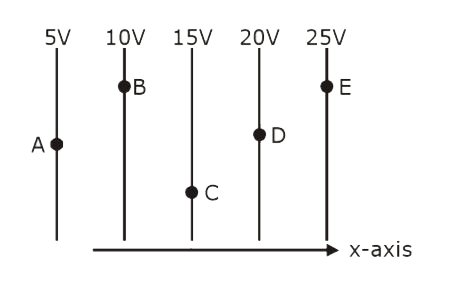
View SolutionThe diagram below show region of equipotentials.

A positive charge is moved from A to B in each diagram .
View SolutionFigure shows sone equipotential surfaces produce by some charges. At which point, the value of electric field is greatest ?
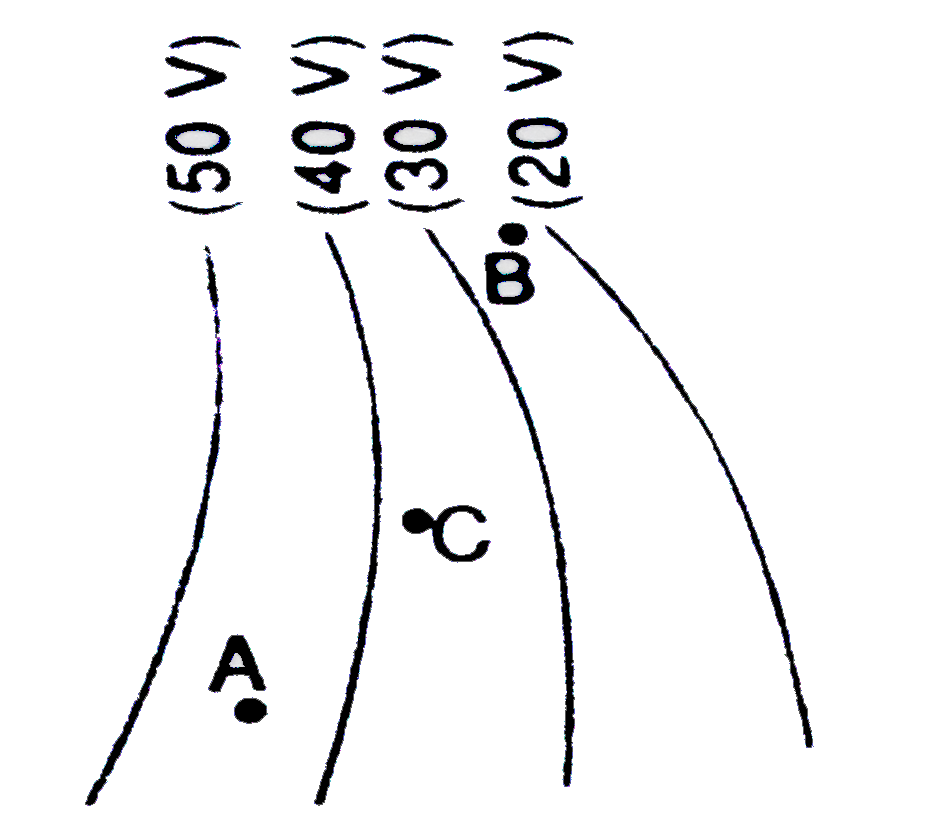
View SolutionFigure shows some of the equipotential surfaces of the magnetic scalar potential. Find the magnetic field B at a point in the region.
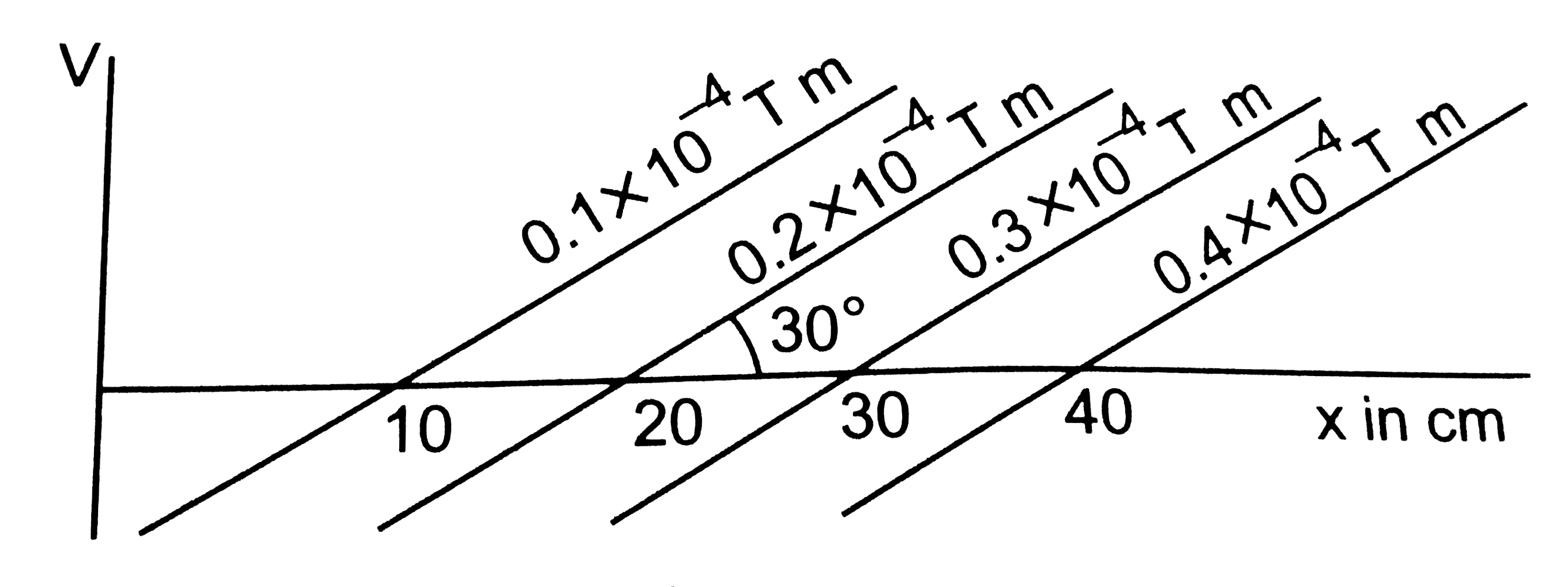
View SolutionThe diagram below show regions of equipotentials.

A positive charge is moved from A to B in each diagram.
View Solution

